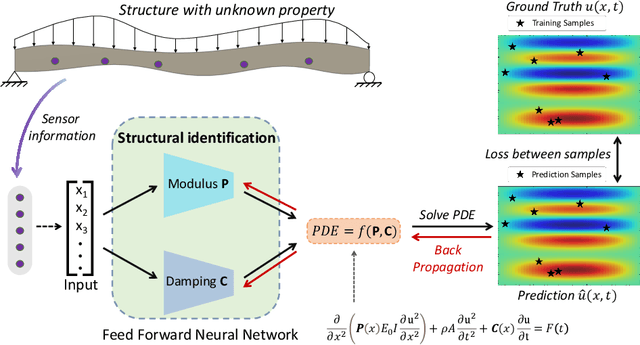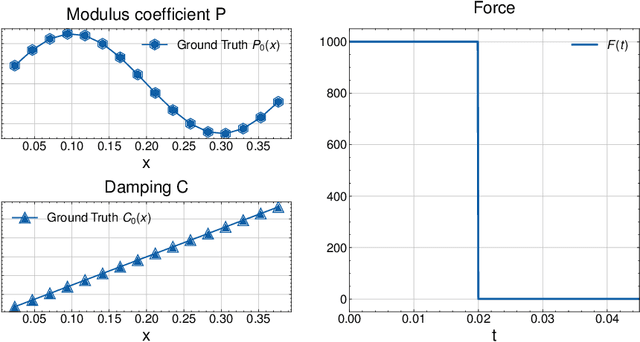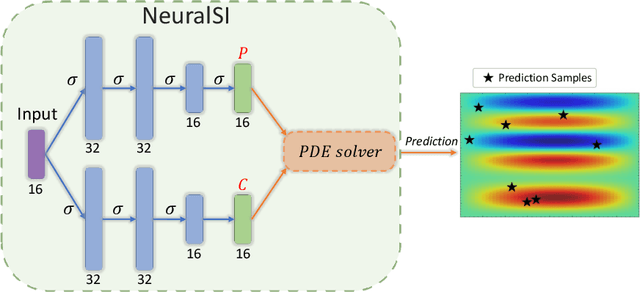Talal Salem
Mechanics-Informed Autoencoder Enables Automated Detection and Localization of Unforeseen Structural Damage
Feb 23, 2024Abstract:Structural health monitoring (SHM) is vital for ensuring the safety and longevity of structures like buildings and bridges. As the volume and scale of structures and the impact of their failure continue to grow, there is a dire need for SHM techniques that are scalable, inexpensive, operate passively without human intervention, and customized for each mechanical structure without the need for complex baseline models. We present a novel "deploy-and-forget" approach for automated detection and localization of damages in structures. It is based on a synergistic combination of fully passive measurements from inexpensive sensors and a mechanics-informed autoencoder. Once deployed, our solution continuously learns and adapts a bespoke baseline model for each structure, learning from its undamaged state's response characteristics. After learning from just 3 hours of data, it can autonomously detect and localize different types of unforeseen damage. Results from numerical simulations and experiments indicate that incorporating the mechanical characteristics into the variational autoencoder allows for up to 35\% earlier detection and localization of damage over a standard autoencoder. Our approach holds substantial promise for a significant reduction in human intervention and inspection costs and enables proactive and preventive maintenance strategies, thus extending the lifespan, reliability, and sustainability of civil infrastructures.
NeuralSI: Structural Parameter Identification in Nonlinear Dynamical Systems
Aug 26, 2022



Abstract:Structural monitoring for complex built environments often suffers from mismatch between design, laboratory testing, and actual built parameters. Additionally, real-world structural identification problems encounter many challenges. For example, the lack of accurate baseline models, high dimensionality, and complex multivariate partial differential equations (PDEs) pose significant difficulties in training and learning conventional data-driven algorithms. This paper explores a new framework, dubbed NeuralSI, for structural identification by augmenting PDEs that govern structural dynamics with neural networks. Our approach seeks to estimate nonlinear parameters from governing equations. We consider the vibration of nonlinear beams with two unknown parameters, one that represents geometric and material variations, and another that captures energy losses in the system mainly through damping. The data for parameter estimation is obtained from a limited set of measurements, which is conducive to applications in structural health monitoring where the exact state of an existing structure is typically unknown and only a limited amount of data samples can be collected in the field. The trained model can also be extrapolated under both standard and extreme conditions using the identified structural parameters. We compare with pure data-driven Neural Networks and other classical Physics-Informed Neural Networks (PINNs). Our approach reduces both interpolation and extrapolation errors in displacement distribution by two to five orders of magnitude over the baselines. Code is available at https://github.com/human-analysis/neural-structural-identification
 Add to Chrome
Add to Chrome Add to Firefox
Add to Firefox Add to Edge
Add to Edge